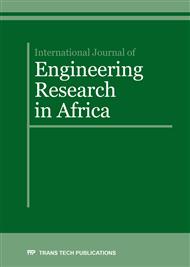p.76
p.87
p.95
p.111
p.119
p.147
p.158
p.167
p.179
Generation of Atmospheric Constants over Some Locations in West Africa: A Theoretical Aid for Measuring Instruments Design
Abstract:
The performance of AERONET or AMMA in West Africa over the past two decades had been successful but not without its challenges. These challenges had resulted in the loss of large volume of useful data. The frequent failures of ground measuring devices over West Africa have been linked to the manufacturer and christened 'manufacturer-error'. In this paper, it was proposed that the frequent failure of ground measuring devices is due to systemic-error. To address the systemic-error, we propose that the configuration of the constants-embedded in the compact flash of the measuring devices is not compatible with the atmospheric conditions of the West African climate. A statistical investigation was carried out on both the ground and satellite dataset to determine the aerosols retention capacity within the West African space. A dispersion model was developed to incorporate salient assumptions and parameters like the Unified number. Fourteen and thirteen years dataset were obtained from Multi-angle Imaging SpectroRadiometer (MISR) and AERONET respectively. Five locations were considered in this study; Ilorin-Nigeria, Ouagadougou-Burkina Faso, Lome-Togo, Conakry-Guinea and Niamey-Niger which are positioned on latitude 8.5 oN, 12.37 oN, 6.17 oN, 9.55 oN, 13.5 oN and longitude 4.53 oE, 1.53 oW, 1.35 oE, 13.67 oW, 2.12 oE respectively. It was observed that the same aerosols retention occurred in West Africa region between 2003 and 2005. Also, it was observed that the high aerosols retention over the locations portray danger to the life form, such as unbearable thermal comfort, increased heat flux, partial famine e.t.c. Hence, the proper documentation and execution of the correct atmospheric constants over locations of West Africa is a novel concept.
Info:
Periodical:
Pages:
119-146
Citation:
Online since:
December 2016
Authors:
Keywords:
Price:
Сopyright:
© 2016 Trans Tech Publications Ltd. All Rights Reserved
Share:
Citation:


